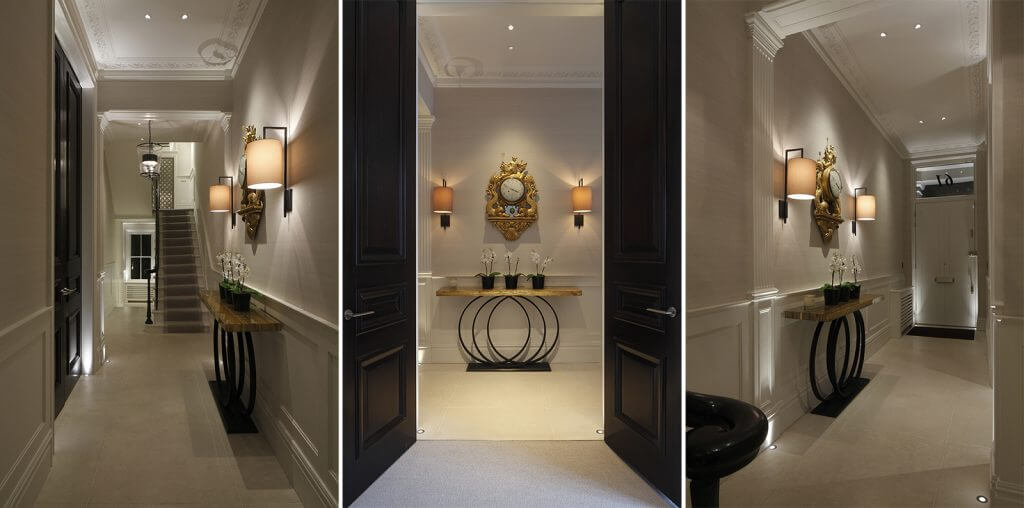
Lighting is a crucial element of interior design that can have a significant impact on the overall look and feel of a space. It can be used to create atmosphere, highlight specific features, and establish a mood. Good lighting can also make a space feel larger and more welcoming.
Understanding Types of Lighting in Interior Designing
There are various types of lighting fixtures to consider in interior design, including natural light, task lighting, accent lighting, and ambient lighting.
Ambient lighting
Ambient lighting, also known as general lighting, is the overall illumination of a room. It provides a comfortable level of light for everyday activities and serves as a base for other types of lighting. Ambient lighting can be achieved through a variety of sources, such as ceiling lights, wall sconces, and floor lamps.
Task lighting
Task lighting is focused lighting that is used to perform specific tasks, such as reading, cooking, or applying makeup. It is usually brighter and more focused than ambient lighting. Examples of task lighting include desk lamps, pendant lights, and under-cabinet lights.
Accent lighting
Accent lighting is used to highlight specific features or areas in a room, such as artwork, plants, or architectural elements. It is usually softer and more subtle than task lighting and can be achieved through spotlights, track lighting, or wall sconces.
Decorative lighting
Decorative lighting is used to add visual interest and style to a space. It can come in the form of chandeliers, pendant lights, or floor lamps and is often used in combination with other types of lighting.
Natural lighting
Natural lighting is sunlight that enters a space through windows or skylights. It is a crucial element in interior design and can greatly impact the overall feel of a room. Natural lighting can be enhanced through the use of sheer curtains, mirrors, and light-colored surfaces.
Lighting Management in Home Decor
Proper lighting can also improve the functionality of a space. For example, having enough light in a kitchen can make cooking and preparing food easier and more enjoyable. In a bedroom, appropriate lighting can help create a peaceful and relaxing atmosphere.
Here are a few tips for managing lighting in home decor:
Use a variety of lighting sources
Incorporate multiple types of lighting, such as floor lamps, table lamps, and ceiling fixtures, to add depth and interest to a space.
Consider the function of the room
Think about the activities that will take place in the room and choose lighting that is appropriate for the task. For example, a reading nook might benefit from a floor lamp with a directional shade, while a dining room might require more general overhead lighting.
Experiment with dimmers
Dimmers allow you to adjust the intensity of the light in a room, which can be useful for creating different moods or accommodating different activities.
Use layering
Layering lighting, such as combining ambient, task, and accent lighting, can help create a more cohesive and dynamic space.
Pay attention to color temperature
The color temperature of a light source can affect the overall mood of a room. Warm, yellow light is often used to create a cozy atmosphere, while cool, blue light can be more energizing.
Lighting is an essential part of interior design because it can highlight certain features, create a sense of depth and dimension, and set the mood for any activity. Good lighting design takes into account the natural light sources in a space, as well as the artificial lighting needed to supplement or enhance it. It also involves choosing the right type and intensity of light, as well as the placement and direction of light fixtures. Ultimately, lighting is an important factor in interior design because it can significantly impact the functionality, comfort, and aesthetic appeal of a space.
Nicholas Hall
Related posts
Stay connected
- How LoveOn Chat Is Becoming the Most Versatile AI Companion for Digital UsersThe internet keeps shifting toward hyper-personal interaction, and AI companions are at the center of this shift. What used to be simple chatbots are now evolving into emotionally aware, adaptive, and multi-functional digital partners. Among the new generation of platforms, LoveOn Chat is becoming one... The post How LoveOn Chat Is Becoming the Most Versatile […]
